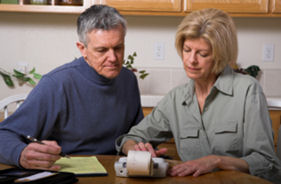 Chapter 7 bankruptcy cases begin when a petition is filed. Debtors must also file schedules and statements either with the petition or soon after. Approximately a week to ten days after the petition is filed the court will send notice of the bankruptcy filing to all of the creditors. The debtor receives a copy as well. The notice informs the debtor and the creditors when the meeting of creditors will take place. It also lets all parties to the bankruptcy know what their rights are and the deadlines associated with the case.
Chapter 7 bankruptcy cases begin when a petition is filed. Debtors must also file schedules and statements either with the petition or soon after. Approximately a week to ten days after the petition is filed the court will send notice of the bankruptcy filing to all of the creditors. The debtor receives a copy as well. The notice informs the debtor and the creditors when the meeting of creditors will take place. It also lets all parties to the bankruptcy know what their rights are and the deadlines associated with the case.
The meeting of creditors takes place approximately thirty to forty-five days after the case is filed. At the meeting, the debtor meets with the trustee and testifies as to the accuracy of the documents filed with the court. The debtor also explains what circumstances led to the bankruptcy filing. The entire meeting lasts between five and fifteen minutes. Creditors can attend the 341 meeting but usually do not. The only creditors that tend to show up to the 341 meeting are ex-spouses, business partners, family owed money, and creditors that believe the debtor defrauded them. Basically, only creditors who take the bankruptcy filing personally tend to show up to the 341 meeting.
After the meeting of creditors the debtor must wait sixty days. During this time the creditors are given an opportunity to review the documents filed in the case and determine whether or not to object to discharge. Objections to discharge are rare occurrences in Chapter 7 consumer bankruptcy cases. Once the sixty day period has passed the trustee will ask the bankruptcy judge to sign a discharge order. If the case is a no-asset case, meaning that there is no property to be liquidated and disbursed to the creditors, then the case is closed. If there are assets for the bankruptcy estate then the case could stay open for up to two years while the trustee administers the bankruptcy estate. There is little for the debtor to do during this time period other than to comply with any requests from the trustee.